Updated on March 20th, 2025 by Okinawa Hai
From the vibrant colors of the Indian Sari to the smell of different masalas in the air, India is a feast for the senses. The country is massive leaving no shortage of diverse landscapes, flavors, and activities to explore.
You could be dancing on the beaches of Goa one day and summiting a peak in the Himalayas next, so knowing what to pack is key. That’s why I’ve put together a complete packing list for India. That way you’ll be prepared for all of the adventures that India throws at you.
What to Pack for India
Travel Health and Safety
Developing countries pose more risks for your health and safety than what you are normally used to at home. That’s not to say that India is unsafe, it just means that it’s very important to be prepared. These items are a must and will help keep you safe and comfortable while traveling in India.
-
1. Neck Wallet
 The crowds in India can get pretty intense. Especially if you’re trying to board a train, you’ll be pushed from all directions. The last thing you want is to get on the train and realize you’re phone and wallet are missing. Using a neck wallet will make sure your items are safe and secure, so there are no surprises.
The crowds in India can get pretty intense. Especially if you’re trying to board a train, you’ll be pushed from all directions. The last thing you want is to get on the train and realize you’re phone and wallet are missing. Using a neck wallet will make sure your items are safe and secure, so there are no surprises. -
2. Activated Charcol
 If you do happen to eat something that causes your stomach to be upset– and I am not talking about the spicy level. Activated Charcol will be your best friend. It quickly absorbs the bacteria that caused your body to panic, so you can recover quickly and get back to enjoying the wonders of India.
If you do happen to eat something that causes your stomach to be upset– and I am not talking about the spicy level. Activated Charcol will be your best friend. It quickly absorbs the bacteria that caused your body to panic, so you can recover quickly and get back to enjoying the wonders of India. -
3. Mosquito Repelling Wristbands
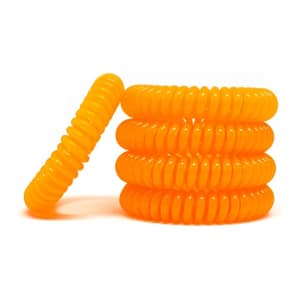 I don’t want to scare you, but Mosquitos in India can carry malaria. While there’s medicine for malaria, it has some pretty horrible side effects that you won’t want to deal with while traveling. Think– diarrhea, stomach cramps, heat flashes and chills, and headaches. To reduce the chance of catching anything, wear mosquito repelling wristbands that will keep the pesky little buggers away.
I don’t want to scare you, but Mosquitos in India can carry malaria. While there’s medicine for malaria, it has some pretty horrible side effects that you won’t want to deal with while traveling. Think– diarrhea, stomach cramps, heat flashes and chills, and headaches. To reduce the chance of catching anything, wear mosquito repelling wristbands that will keep the pesky little buggers away. -
4. Probiotics
 Probiotics give your gut a boost of good bacteria. When we have a more diverse flora in our guts, our body is better prepared for the “new” bacteria that are found in food in different parts of the world. If you don’t want to spend your time in India hunched over the toilet with Dehli Belly, start taking probiotics a couple of days before leaving and continue them throughout your trip.
Probiotics give your gut a boost of good bacteria. When we have a more diverse flora in our guts, our body is better prepared for the “new” bacteria that are found in food in different parts of the world. If you don’t want to spend your time in India hunched over the toilet with Dehli Belly, start taking probiotics a couple of days before leaving and continue them throughout your trip. -
5. Electrolytes
 When you’re busy enjoying the new scenery, you often forget about staying hydrated. To avoid getting heat dehydrated or worse, heat stroke while you’re in India pop a few electrolyte tabs into your water throughout the day. Plus, if you do end up getting sick in India, these can quite literally save your life– making sure you’re body doesn’t get depleted from the unfortunate side effects of travelers’ sickness.
When you’re busy enjoying the new scenery, you often forget about staying hydrated. To avoid getting heat dehydrated or worse, heat stroke while you’re in India pop a few electrolyte tabs into your water throughout the day. Plus, if you do end up getting sick in India, these can quite literally save your life– making sure you’re body doesn’t get depleted from the unfortunate side effects of travelers’ sickness. -
6. VPN
 Since having a mishap during a trip where all of my credit card information was stolen, I always use a VPN when I am traveling. Connecting to public wifi means that your data is easily accessible by others who are also connected to the wifi, a VPN secures your data and makes it virtually impossible to get hacked.
Since having a mishap during a trip where all of my credit card information was stolen, I always use a VPN when I am traveling. Connecting to public wifi means that your data is easily accessible by others who are also connected to the wifi, a VPN secures your data and makes it virtually impossible to get hacked. -
7. Luggage Locks
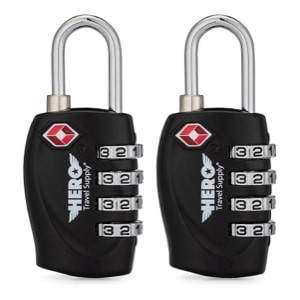 There are times when your luggage will be unattended throughout your travels, for example when you arrive early for check-in and your luggage is in a storage closet, or when you’re in the Himalayas and there’s no lock on your bnb’s room door. Having a luggage lock will give you peace of mind that no one is digging around your luggage while you’re out sightseeing.
There are times when your luggage will be unattended throughout your travels, for example when you arrive early for check-in and your luggage is in a storage closet, or when you’re in the Himalayas and there’s no lock on your bnb’s room door. Having a luggage lock will give you peace of mind that no one is digging around your luggage while you’re out sightseeing. -
8. Travel Insurance
 No one ever plans for something to go wrong while there are traveling, but sometimes it happens anyways. Making sure you’re fully covered with good travel insurance can save you from headaches and not to mention bills that come with accidents that happen while traveling.
No one ever plans for something to go wrong while there are traveling, but sometimes it happens anyways. Making sure you’re fully covered with good travel insurance can save you from headaches and not to mention bills that come with accidents that happen while traveling.
Packing hacks
Packing is the part of traveling that I dread, however with these products it’s a lot easier to fit everything in and stay organized throughout the trip. Once you have them, you will never travel without them.
-
9. Packing Cubes
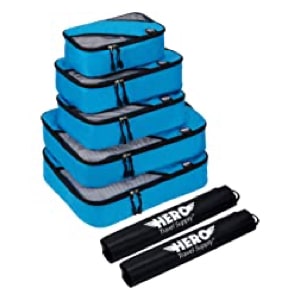 With all the different landscapes and climates that you’ll encounter in India, packing is not easy. Packing cubes are my saving grace for destinations like this. They keep you nice and organized along the way, all you have to do is take the dedicated packing cube for that location out of your luggage, and everything else stays neatly tucked away.
With all the different landscapes and climates that you’ll encounter in India, packing is not easy. Packing cubes are my saving grace for destinations like this. They keep you nice and organized along the way, all you have to do is take the dedicated packing cube for that location out of your luggage, and everything else stays neatly tucked away. -
10. Windproof Travel Umbrella
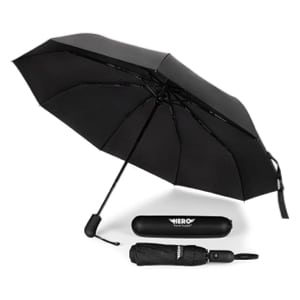 The monsoons in India are no joke. The locals love them because they bring a sense of calm and a bit of relief from the heat, but if you’re traveling you’ll need a heavy-duty windproof umbrella to keep you dry.
The monsoons in India are no joke. The locals love them because they bring a sense of calm and a bit of relief from the heat, but if you’re traveling you’ll need a heavy-duty windproof umbrella to keep you dry. -
11. Personal Item Bag
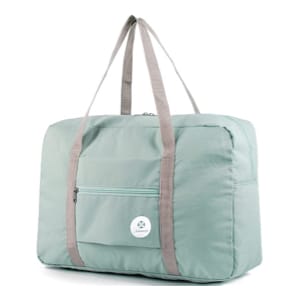 When you’re on a grand tour of the Indian Subcontinent there’s a lot of traveling to be done. You’ll be catching planes, trains, cars, and maybe even a rikshaw or two. Having a personal item bag where you can keep your valuables is key. This way if you get separated from your luggage, you have all the important items with you.
When you’re on a grand tour of the Indian Subcontinent there’s a lot of traveling to be done. You’ll be catching planes, trains, cars, and maybe even a rikshaw or two. Having a personal item bag where you can keep your valuables is key. This way if you get separated from your luggage, you have all the important items with you. -
12. Luggage Strap
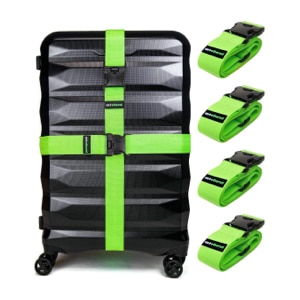 You’re bound to pick up a few souvenirs during your time in India. There are so many impressive craftsmen making beautiful, high-quality items. The only problem is that your luggage can only fit so much. If you like to push it to the limit, using luggage straps will give you peace of mind that your zippers aren’t going to bust as they handle your suitcase post-check-in.
You’re bound to pick up a few souvenirs during your time in India. There are so many impressive craftsmen making beautiful, high-quality items. The only problem is that your luggage can only fit so much. If you like to push it to the limit, using luggage straps will give you peace of mind that your zippers aren’t going to bust as they handle your suitcase post-check-in. -
13. Hanging Toiletry Bag
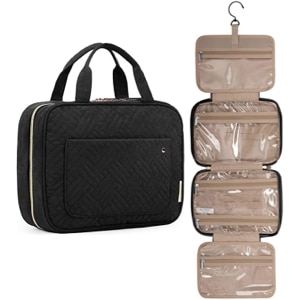 A hanging toiletry bag is a god-sent when you’re in the Himalayas or on a Nature Reserve. Chances are the bathroom counter will be tiny or non-existent. Being able to hang your bag on the door will save you from forgetting something you set on the floor, or having to juggle all of your cosmetics.
A hanging toiletry bag is a god-sent when you’re in the Himalayas or on a Nature Reserve. Chances are the bathroom counter will be tiny or non-existent. Being able to hang your bag on the door will save you from forgetting something you set on the floor, or having to juggle all of your cosmetics. -
14. Universal Travel Adapter
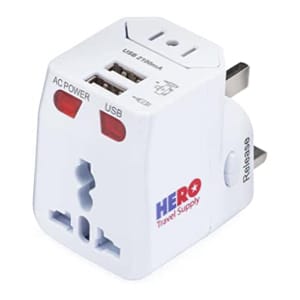 Travel adapters are an essential item for any trip abroad. A good rule of thumb is to always pack a few more than you think you’ll need– often when traveling you need to charge multiple devices at the same time. India uses the same outlets as the UK, so bring a few high-quality UK adapters or universal plug adapters.
Travel adapters are an essential item for any trip abroad. A good rule of thumb is to always pack a few more than you think you’ll need– often when traveling you need to charge multiple devices at the same time. India uses the same outlets as the UK, so bring a few high-quality UK adapters or universal plug adapters. -
15. Travel Sized Toiletry Bottles (TSA Approved)
 With all the intercity flying you’re going to be doing, it’s important to make sure that your toiletry bottles are TSA compliant. Having to throw away the big bottles and find new ones in each city would be a waste of time and money.
With all the intercity flying you’re going to be doing, it’s important to make sure that your toiletry bottles are TSA compliant. Having to throw away the big bottles and find new ones in each city would be a waste of time and money.
Sightseeing in the Cities
From the Gate of India in Mumbai to Agra’s Taj Mahal, there’s no shortage of sightseeing to be done in the Cities of India. Plus the city life itself is just as thrilling as seeing the landmarks. Catching a rikshaw, eating street food, and visiting a Hindu temple are all must-do experiences in and of themselves.
-
16. Travel Sickness Tablets
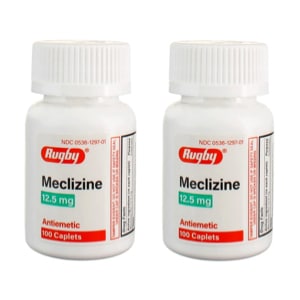 The street food in India is unparalleled anywhere else in the world. From the spicy hot dishes to the fresh fruits, it’s all divine. However, most of the street food is washed or cooked with unfiltered water, which has germs that our bodies aren’t used to as foreigners. Even if you have a stomach of steel, it’s a good idea to bring a pack of Travel Sickness tablets.
The street food in India is unparalleled anywhere else in the world. From the spicy hot dishes to the fresh fruits, it’s all divine. However, most of the street food is washed or cooked with unfiltered water, which has germs that our bodies aren’t used to as foreigners. Even if you have a stomach of steel, it’s a good idea to bring a pack of Travel Sickness tablets. -
17. Silk Scarf
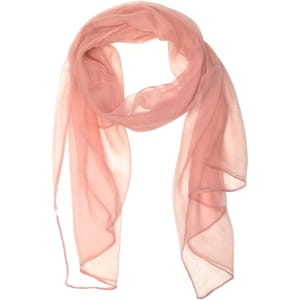 You’re going to want to visit a temple in India. While it’s not mandatory, it’s seen as a sign of respect to drape a scarf over your head. If you want to “fit in” pick a colorful scarf– just make sure that you use a light and breathable material like silk because it gets hot inside the temple.
You’re going to want to visit a temple in India. While it’s not mandatory, it’s seen as a sign of respect to drape a scarf over your head. If you want to “fit in” pick a colorful scarf– just make sure that you use a light and breathable material like silk because it gets hot inside the temple. -
18. Earplugs
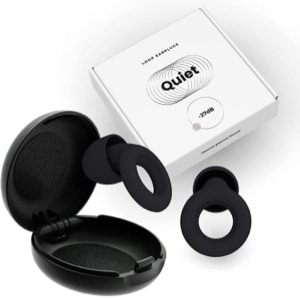 If there’s one thing that I remember vividly from India, it’s the sounds. If you’re a light sleeper make sure to pack earplugs. They’ll come in handy more often than you’d expect. If you are taking the train from city to city, they’re nice to have to drown out some of the noise and get some quiet time in the middle of the chaos.
If there’s one thing that I remember vividly from India, it’s the sounds. If you’re a light sleeper make sure to pack earplugs. They’ll come in handy more often than you’d expect. If you are taking the train from city to city, they’re nice to have to drown out some of the noise and get some quiet time in the middle of the chaos.
Beaches of South India
The beaches of South India are some of the best places to visit in India, the lush tropical climate gives the area a laid-back attitude that is a stark contrast to the hustle and bustle of the bigger cities in India. The beaches are the main draw and attract an international crowd. From the northern coast of quiet sandy beaches to the party beaches of the south– there’s something for every sun-worshipper.
-
19. Sand-Resistant Beach Blanket
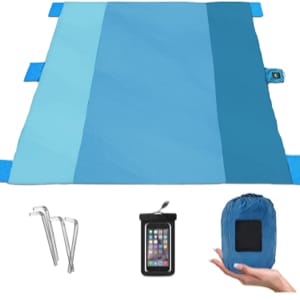 The beaches in Goa are gorgeous sandy beaches. Instead of fighting with your towel or blanket every time that you return from the water, bring a sand-resistant beach blank, so you can simply just shake the sand away.
The beaches in Goa are gorgeous sandy beaches. Instead of fighting with your towel or blanket every time that you return from the water, bring a sand-resistant beach blank, so you can simply just shake the sand away. -
20. Quick-Dry Travel Towel
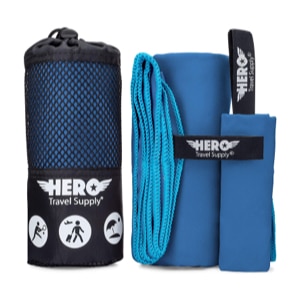 You never know where the day will take you. One minute you’re taking a dip in the sea the next you are on a moped driving through the jungle to a remote restaurant for dinner. You don’t want to have to drag around a wet towel on your adventures. Pack a quick-dry towel that can be thrown into your beach bag.
You never know where the day will take you. One minute you’re taking a dip in the sea the next you are on a moped driving through the jungle to a remote restaurant for dinner. You don’t want to have to drag around a wet towel on your adventures. Pack a quick-dry towel that can be thrown into your beach bag. -
21. Waterproof Phone Case
 You’re not going to want to spend your time in India at a phone repair shop trying to salvage it from water damage– even “waterproof” phones can easily fall victim to an unexpected splash if theirs a small crack anywhere, make sure your phone is protected with a waterproof phone case.
You’re not going to want to spend your time in India at a phone repair shop trying to salvage it from water damage– even “waterproof” phones can easily fall victim to an unexpected splash if theirs a small crack anywhere, make sure your phone is protected with a waterproof phone case. -
22. Beach Bag
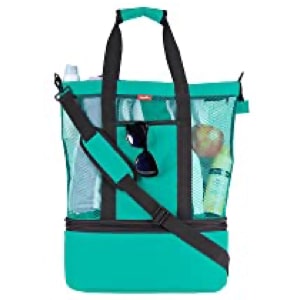 While there’s no shortage of beach bars and little markets on the coast with everything you need for the beach, it’s still a good idea to bring along a beach bag packed with all your essentials– sunscreen, quick-dry towel, sand proof beach blanket, and of course lots of water because the sun is hot hot hot in India.
While there’s no shortage of beach bars and little markets on the coast with everything you need for the beach, it’s still a good idea to bring along a beach bag packed with all your essentials– sunscreen, quick-dry towel, sand proof beach blanket, and of course lots of water because the sun is hot hot hot in India. -
23. Swimsuit Cover-Up
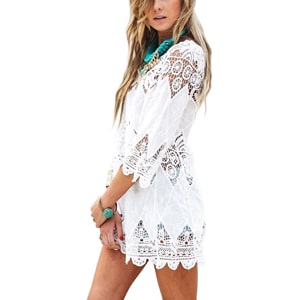 The beaches of South India are less conservative in terms of what you can wear compared to the rest of India but it’s still a good idea to bring a swimsuit coverup to throw on when you are leaving the beach or hitting up the beach bar for a tropical drink.
The beaches of South India are less conservative in terms of what you can wear compared to the rest of India but it’s still a good idea to bring a swimsuit coverup to throw on when you are leaving the beach or hitting up the beach bar for a tropical drink.
Hiking in the Himalayas
Hiking in the tallest mountain range in the world might sound a little off-putting for those of us that aren’t mountaineers, but thanks to the hill stations (small mountain-top towns) you can find treks for every level hiker starting from these villages.
-
24. Cooling Towel
 Even if it’s a little cooler up in the mountains, hiking always works up some heat. To make sure you stay nice and cool on your trek throw a cooling towel into your day pack. All you have to do is get it wet and you’ll be able to wrap it around the back of your neck for some instant relief.
Even if it’s a little cooler up in the mountains, hiking always works up some heat. To make sure you stay nice and cool on your trek throw a cooling towel into your day pack. All you have to do is get it wet and you’ll be able to wrap it around the back of your neck for some instant relief. -
25. LifeStraw Water Bottle
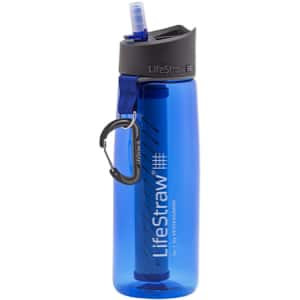 Under no circumstances should you drink tap water in India, it’s just asking to get travelers sickness. Rather than have to spend your day clutched to the toilet, bring a water bottle with a built-in filter so you know that the water you’re drinking is clean.
Under no circumstances should you drink tap water in India, it’s just asking to get travelers sickness. Rather than have to spend your day clutched to the toilet, bring a water bottle with a built-in filter so you know that the water you’re drinking is clean. -
26. Bug Spray
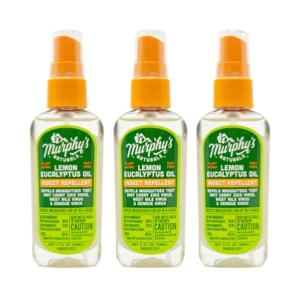 The bugs can be relentless in the Himalayas. If you want to avoid heading to your next Indian destination with tons of itchy red spots, bring along a good amount of bug spray with you on your mountain adventures.
The bugs can be relentless in the Himalayas. If you want to avoid heading to your next Indian destination with tons of itchy red spots, bring along a good amount of bug spray with you on your mountain adventures. -
27. Lipstick-Sized Portable Charger
 Packing a portable phone charger is a crucial item to remember. You don’t want your phone to die while you’re trekking in the Himalayas because if you get lost there is no way to ping the local authorities for help. Plus, when you reach the summit of your trail, the views are truly breathtaking, so you’ll want to be able to snap a few pictures.
Packing a portable phone charger is a crucial item to remember. You don’t want your phone to die while you’re trekking in the Himalayas because if you get lost there is no way to ping the local authorities for help. Plus, when you reach the summit of your trail, the views are truly breathtaking, so you’ll want to be able to snap a few pictures. -
28. Day Pack
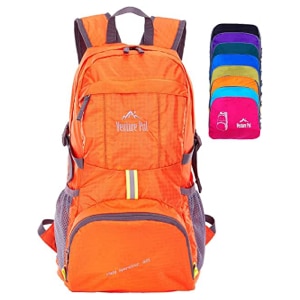 A day pack is absolutely essential in the Himalayas. For most of the treks, you’ll be leaving early in the morning and not returning for 6-7 hours. You’ll need to carry everything for the day with you. To keep your hands free while you’re on the trails, putting everything into your day pack is a no-brainer.
A day pack is absolutely essential in the Himalayas. For most of the treks, you’ll be leaving early in the morning and not returning for 6-7 hours. You’ll need to carry everything for the day with you. To keep your hands free while you’re on the trails, putting everything into your day pack is a no-brainer.
Wildlife Sanctuary
India is home to some pretty impressive animals. Think lions, tigers, and elephants. There are wildlife sanctuaries throughout the south of India where you can participate in a safari to see the animals.
-
29. Rain/wind Jacket
 Even if you’re heading to a sanctuary outside of monsoon season you’ll want to bring a rain jacket. The last thing you want is a lion to come out of hiding and you can’t get a picture quick enough because you’re juggling an umbrella.
Even if you’re heading to a sanctuary outside of monsoon season you’ll want to bring a rain jacket. The last thing you want is a lion to come out of hiding and you can’t get a picture quick enough because you’re juggling an umbrella. -
30. Affordable Action Camera
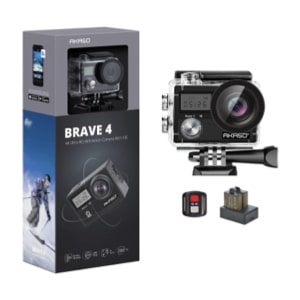 You’ll be shocked at how quickly a lion can move– to get the best footage of your safari bring an action camera along. You’ll be happy to have crisp clear footage of everything you experience in India when you’re back home.
You’ll be shocked at how quickly a lion can move– to get the best footage of your safari bring an action camera along. You’ll be happy to have crisp clear footage of everything you experience in India when you’re back home. -
31. Sun hat
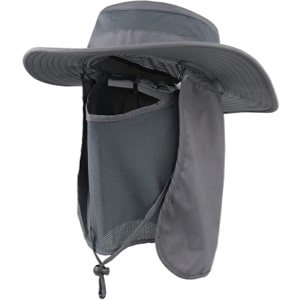 When you’re out in the sanctuary you’ll want to protect yourself from the sun, not to mention block the sun from blinding your view. Pack a sunhat that also covers your neck, that way you’ll be able to focus on spotting the big game, and less on continuously reapplying sunscreen.
When you’re out in the sanctuary you’ll want to protect yourself from the sun, not to mention block the sun from blinding your view. Pack a sunhat that also covers your neck, that way you’ll be able to focus on spotting the big game, and less on continuously reapplying sunscreen. -
32. Compact Binoculars
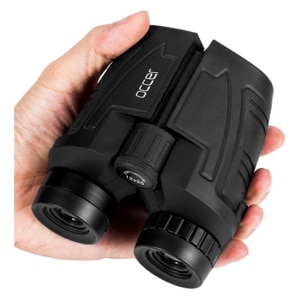 It’s always a gamble when you go on a safari whether or not you’ll be able to get close enough to see any of the animals– but if you bring a pair of binoculars you’ll increase your chances of being able to see the animals in action.
It’s always a gamble when you go on a safari whether or not you’ll be able to get close enough to see any of the animals– but if you bring a pair of binoculars you’ll increase your chances of being able to see the animals in action.
Other India Packing List Items Not to Leave at Home
- Motion Sickness Pills
- Altitude Sickness Pills
- Reef-Safe Sunscreen
- Insulated Water Bottle
- Collapsable Carry-on Tote
- Sunglasses
- Sunglasses Case
- TSA-Approved Plastic Bag
- Solid Shampoo
- Shampoo Bar Case
- Stain Remover Wipes
- Lip Balm
- Aloe Vera
- After Bite
- Insect Repellent
- Toothbrush Cover
- Loofah Glove
- Mini Hairbrush
- First-Aid Kit
- GoPro
- Selfie Stick
- Memory Card
- Flash Drive
- Kindle
- Kindle Cover
- Headphones
- Sleep Mask
- Earplugs
- Travel Pillow
- Face Wipes
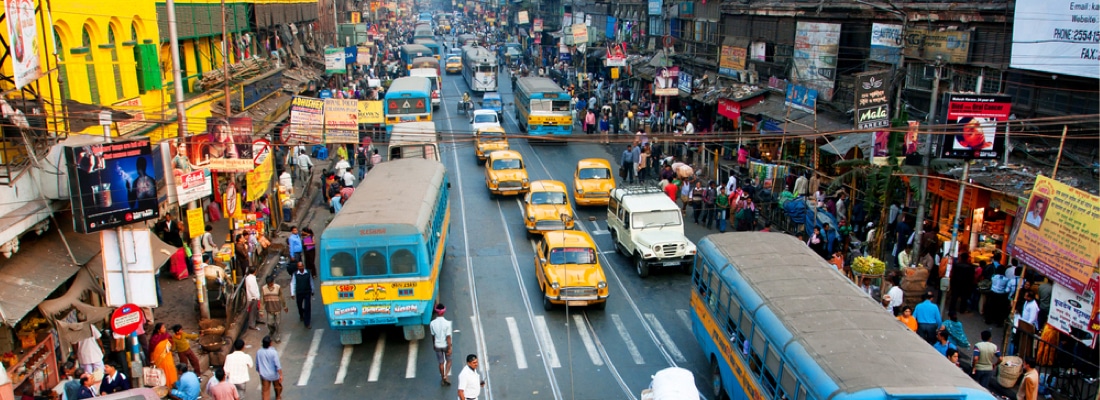
What to Pack for the Weather & Different Seasons
Summer – May and June
Summer in India is not for the faint of heart. The weather is hot reaching upwards of 110 degrees. You’ll want to wear loose-fitting clothes that are made with natural materials plus a sunhat to protect your head. If you’re headed to the mountains make sure you pack a light jacket because it can get cooler in the higher altitude locations. For coastal regions, or if you’re staying at hotel with a pool, don’t forget your swimsuit and coverup.
Monsoon – July and August
If you’re headed to India during the Monsoon season make sure everything you bring, down to your day pack, is waterproof. The rain will be coming down in sheets, so to get from a to b make sure you have water-wicking pants, your umbrella, and a pair of rain boots. It’ll still be warm, so make sure your clothes are breathable as well.
Autumn – September and October
Although the monsoon season is over, in the Autumn there are still scattered rainfalls. A general rule during this season is the more south you go, the wetter it will be. You should wear waterproof, loose-fitting clothes that will keep you cool and dry. If you’re heading north, pack a light jacket to wear on treks or during cooler evenings.
Pre-Winter – November and December
The rainy season will be over and the weather will be mild for India’s standards, ranging from 75° to the upper 80s depending on which area of the country you are in. You should bring comfortable clothes, like loose cotton pants and t-shirts. A light jacket or sweater if you’re in the north, and a long skirt or shorts if you’re in the south.
Winter – January and February
The winter months in India are extremely pleasant, with lots of sunshine and moderate temperatures ranging from the mid-60s in the north to the upper 80s in the south. If you’re staying in the north you should pack breathable clothes for the day and long sleeves, or a light jacket for the evening. If you’re headed south you’ll want to wear loose-fitting clothes, like a cotton maxi dress, or linen trousers and a T-shirt. Wherever you go, you’ll want to have sunglasses and sunscreen in your daypack.
Spring – March and April
In spring the temperature starts to climb again. In some regions reaching over 100°. Needless to say, you’ll want to wear light clothing made out of natural materials. Loose cotton pants and tunic are favored by the locals during this season. Throwing a cooling towel in your daypack will come in handy when you’re overheating. Plus don’t forget a hat and sunglasses to protect you from the intense mid-day sun.

What NOT to Bring to India
- Bulky Clothes
Even if you’re going to India during the winter, you won’t need your heavy-duty winter gear (unless you’re planning on reaching some of the higher altitudes in the Himalayas). Leave your bulky clothes at home so you have room for more souvenirs in your luggage. - Full suitcase
While you’ll be tempted to pack your suitcase full, believe me when I say if you leave some extra room in your suitcase it will not be empty on the way back. India has one of the best craftsmanship cultures in the world, so there will be plenty of opportunities to be tempted with. - Expensive Jewelry
Traveling with expensive jewelry is never a good idea and India is no exception. You don’t want to worry about losing it or drawing unwanted attention to yourself on the streets. While India is a safe place, crimes like theft happen everywhere– especially when one necklace could provide the livelihood of an entire family for a year. - Hair Dryer
There’s no need to worry about bringing a hair dryer along with you. India has some of the best services I have experienced during my travels. The hotels that you stay at will surely have a hairdryer or will be happy to get one for you.
FAQs About What to Pack for India
- Can I wear shorts?
You can wear shorts, but they should be modest shorts– a good rule of thumb is the good ol’ finger-tip test. If your shorts are shorter than your fingertips, then it’s probably best to leave them behind. - Can I wear a bikini in India?
In Goa, it’s common to see women in Bikinis. Outside of Goa, it’s not as common. There isn’t a rule against it– however, it will most definitely draw unwanted attention outside of Goa. - Do I need to bring warm clothes?
If you’re going to the North of India during the winter months or to the Himalayas during any season, you’ll want to have some warmers layers to be able to put on. - Should I pack a raincoat?
If you’re visiting during the Monsoon or pre-winter, absolutely yes. The rain is intense during these seasons, so you’ll get good use out of your raincoat. - What should I pack for the Taj Mahal?
Contrary to popular belief, there isn’t a specific dress code for the Taj Mahal. However, like everywhere in India you should dress modestly. For incredible photos, where something bright like a long flowy red dress. - What should I pack for intercity travel in India?
You’ll want to optimize for comfort while traveling. You won’t want to sit on a hot and crowded train for 4 hours in jeans. Pack a cotton dress, or comfortable loose pants. Plus make sure you have your neck wallet, so you don’t have to worry about forgetting your passport, wallet, or tickets anywhere. - How much should I pack for a trip to India?
While this depends on how long you’re staying in India, I’d recommend only packing a few outfits. Remember that you can always pick up a shirt or pair of pants if you need to. Also, keep in mind that almost every accommodation in India will offer to wash and press your clothes for a small fee.


